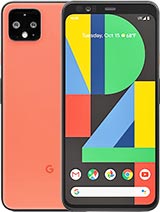Pixel 4 vs Sony Xperia 5 camera comparison By Phandroid
Hey, what's going on guys, I'm, Nick gray, and today we are doing another smartphone camera comparison using the pixel for which I'm using to record right now and comparing that to the Sony Xperia v. Now these phones actually do have quite a bit in common when it comes to the hardware. But when it comes to the software optimization for those images, there is a big difference. So let's jump into the specifications of these two smartphones to see how they compare we're going to start things off with the triple camera. On the back of the Xperia v, all three of these cameras actually featured 12 megapixel sensors. The first one is the standard with optical image stabilization.
The second is 2x telephoto with optical image, stabilization as well, and then finally, an ultra wide-angle lens with a 16 millimeter field of view, and all of these can record 4k video at up to 30 frames per second, we flipped things around for the front-facing camera on this phone you're. Looking at an 8 megapixel sensor up there that can record 1080p video at 30 frames per second, when looking at the Google Pixel 4, you have a larger camera module in the back here, but there's actually only two camera sensors, the first one being a 12 megapixel camera with optical image, stabilization and then the second is a 2x telephoto with a 16 megapixel sensor with optical image, stabilization as well, and these can record 4k video at up to 30 frames per second. The front-facing camera on this phone, like the Sony, is also an 8 megapixel sensor, capable of recording 1080p video again at 30 frames per second. So now that we're all on the same page when it comes to the specifications of these two smartphones, we're going to jump into some side-by-side photo and video comparisons between these two devices just be sure to keep your eye at the bottom of the screen to see which device is being used. So with that, let's get started you who's, making all that noise I'm trying to record here you these devices.
You can see here that the Sony simply can't keep up with the pixel. For as you can see, as the shadows hit my face here were recording at night in my office, the pixel doesn't much better device a little dominating my face. Then the Sony does and kind of the same for the rear-facing cameras as well, while recording video, which we're going to show you right here so flipping things around cue, the main camera as we're looking at items on the desk, which are illuminated by the lamp. Both of these devices do a pretty good job here. But then, as we move away and look at the rest of the room, it's dark shadows.
The pixel for does a much better job. Then the Sony do you can see here pulling in a lot more light, then Sony's device? Well, that's going to do it for this camera comparison between the Sony Xperia 5 and the Google Pixel 4, as I mentioned at the very beginning. These two devices do have very similar hardware, but, as you can see, the results from those cameras are dramatically. Different. Google definitely comes out ahead when it comes to snapping pictures in daylight and in low-light conditions with Sony's device really blowing out the highlights a lot of time and over exposing the images, while it's simply trying to pull in more light, rather than doing that with software optimization, like Google, does with multiple exposures.
So let me know what you guys think of the final results in the comments below and which device you would rather own for snapping pictures on a daily basis. Thank you guys. So much for watching, and we'll catch you in the next one.
Source : Phandroid

























